Researcher: Ramatoulie Bah, Junior/Physics/Computer Science
Mentor: Dr. Daniel Smith
Internship: South Carolina State University
Title: Clustering of Galaxies
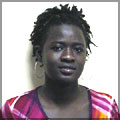
Within the model of galaxy clustering, galaxies were randomly chosen to image this model. A number of galaxies were given by their location that had been identified by rows and columns. These galaxies filled a fraction of the universe that initialized dimensions of the universe. While the universe expands, the radius of the horizon expands. The model has given a number of galaxies, and a number of cells to be filled randomly. If a random cell is already filled, the program chose another cell that is empty in close neighboring distance to the chosen galaxy.
A model universe with galaxies in them was created . Placing each galaxy in separate cells, they eventually formed into clusters due to the massiveness of the galaxies, with respect to their mutual gravitational attraction. However, the big question of our research was, how to make the galaxies overlap forming layers on top of each other.
When you have galaxy clusters that means that those galaxies are in the neighborhood of each other. So if we just put together a bunch of galaxies, then it would be a mess because we wouldn't know what is in the neighborhood of what. This would totally defeat the purpose of our project.
Researcher: Shayla Brooks, Junior/Computer Science
Mentor: Dr. Cheryl Lewis
Internship: Ronald E. McNair Program at Elizabeth City State University
Title: Using Computer Programming to do DNA Sequence Analysis
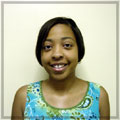
An example
of a short DNA sequence is:
Aaacaaaatg gttgagaaac acggctctaa actcatgtaa agagttcaag aaggaaagca aaaacagaaa
tggaaagtgg tccagaagca ttaagaaagt ggaaatcagt atgttcccta tttaaggcat ctgcaggaag
caaagccttc agagaaccta gagcccaagg ttcagagtca cccatctcag caagcccaga agcatctgca
atatctatga tg
The investigator identified! developed a variety of computer programs that can be used for identifying and recognizing various patterns in DNA Sequences. Many of the actual DNA Sequences will were obtained from "GenBank", which is a database of publicly available genetic sequences. Furthermore, the computer programs the investigator identified/developed were used ~ exarnine many of these sequences. Some known patterns were exhibited and new ones were identified. Current and Future research in DNA Sequence Analysis is also included.
Researcher: Torreon N. Creekmore, Junior/Physics
Mentor: Dr. Daniel S. Spicer
Internship: NASA Goddard Space Flight Center
Title: Introduction to Modern Computational Fluid Dynainics
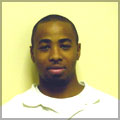
Researcher: Vincent A. Davis, Junior/Physics
Mentors: Dr. Kenneth Mighell & Mr. Roy Tucker
Internship: Undergraduate Research Program In Astrophysics REU Program University of Arizona - Tucson, AZ
Title: An Amateur Search For Near-Earth Asteroids

Researcher: Willie Gilchrist, Sophomore/Computer Science
Mentor: Yohan Baillot
Internship: Naval Research Laboratory
Title: Evaluation of a prototype modular For Battlefield Augment Reality Systems
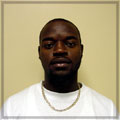
My objective this summer was to evaluate of all prototype modelers for the Navy Battlefield Augments Reality Systems BARS. I had numerous fundamental tasks. My first task was to understand BARS, well enough to modify and construct a building using the Bamboo software. Bamboo is software system where modulus can make up, and dynamically locate at run time. You can extend the program capabilities while it is running. I was also asked to draw an inside diagram of building 34 deck one and two. With this diagram I was instructed to measure and assemble a BARS model for the inside of building 34. After I assemble the model of building 34 it was then Exporting into BARS. There the outer frame of building 34 was already constructed.
Researcher: Paula R. Harrell, Sophomore/Computer Science
Mentor: Dr. Kuzman Adzievski
Internship: South Carolina State University
Title: Compression and Denoi sing of Astronomical Images Using Wavelets

Researcher: Travis Jennings, Sophomore/Computer Science
Mentor: Dr. Linda Hayden and Dr. Charles Sun
Internship: Undergraduate Research Experience in Ocean and Marine Science
Title: CoastWatch Validation Study

The CoastWatch Validation Study team conducted research to determine the reliability and accuracy of Coast Watch. To conduct this study CoastWatch software, AVHRR datasets, and ground truthing were utilized. AVHRR composites were also created and analyzed. Those composites were then compared to data collected from various sources one being the Field Research Facility (FRF. FRF is a coastal and hydraulic facility located in Duck, North Carolina. They conduct research on a variety of activities including coastal dynamics, sediment transport, long-term beach evolution, and measurement techniques.
Researcher: Melvin L. Mattocks, Senior/Computer Science
Mentor: Timothy P. Olsen, Ph.D
Internship: Univ. of Wisconsin-Madison IES-Environmental Remote Sensing Center
Title: Web Serving Landsat 7 Satellite Imagery
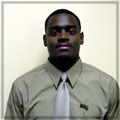
Landsat 7
is a U.S. satellite used to obtain remotely sensed images of the Earth.
These include images of land surface and surrounding coastal regions.
Landsat 7, the newest of 6 Landsat satellites, detects spectrally filtered
radiation at visible, near-infrared, short wave, and thermal infrared
frequency bands from Earth. The ETM+ (Enhanced Thematic Mapper Plus) sensor,
which makes this achievable, is an eight-band multi-spectral scanning
radiometer that is proficient in providing high-resolution image information
of the Earth's surface. The ETM+ measures the radiation reflected by land
features.
Landsat 7 was developed to see earthly features, rather than surface waters.
So the ETM+ sensors are most sensitive to the range of radiance values
encountered in features such as forests, agricultural fields, roads, urban
areas, etc. This is what the sensors do best. Fortunately, this does not
mean that Landsat 7 cannot observe radiation reflected from surface waters.
This just means they are not particularly sensitive to that range of radiance
(Measure of the energy radiated by an object).
Landsat 7 imagery is an exceptional reference tool for lake monitoring. The imagery acquired by Landsat 7 can be used to analyze, manage, and enhance water quality and characteristics in the lakes. Web serving this information for these purposes and others that have not been considered is ideal.
Researcher: Golar Newby – Junior/Computer Science
Mentor: Simon Julier
Internship: Naval Research Laboratory - Information Technology Department
Title: The Feasibility Of Generating Photometric Models For An Augmented Reality
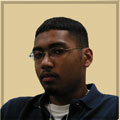
Needless to say this task could not be completed in a summer, or even a year, therefore the task was been broken down into several sub tasks. The individual selected task for this summer research project was to find a faster and more accurate modeling technique for constructing buildings. Each building was to include several photographs, a photometric file, a VRML 2 file, coordinate system, origin, and orientation. With these items for each building, the mobile computer should be able to place each building into a scene so that the user can look through a pair of tinted glasses and see a computer generated model of the building as well as the actual building in the background. This allowed the user to see the building in front of him as well as other buildings not visible because of obstructions. This task is still one of the vital aspects to the projects progress. Besides the models that have be generated during the research project, the leading group in Photometric modeling from MIT will be coming to compare the results produced from the research they are conducting. The overall research project will greatly benefit from the results that have been generated from both methods.
Back
to Top
Researcher: Elizabeth Rascoe, Junior/Computer Science
Mentor: Helen Woodland
Internship: Federal Aviation Administration
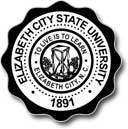
Researcher: Carl W. Seward, Sophomore/Mathematics
Mentor: Dr. Claudia Rankins
Internship: Hampton University - Undergraduate Institute in Physics (UniPhy – REU) Program
Title: Form Factors and Distribution Amplitudes for Positively Charged Pions

Researcher: Eunice D. Smith – Sophomore/Mathematics/Computer Science
Mentors: Dr. Elliott McCrory, Dr. Jean A. Slaughter, and Dr. David J. Ritchie
Internship: Ferrni National Accelerator Laboratory (Fermilab)
Title: What I Break? - What Breaks Me? A Perl Programming Project
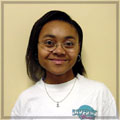
Researcher: Nelson D. Veale – Sophomore/Computer Science
Mentor: Dr. Norman G. Loeb
Internship: Advanced Undergraduate Research using Optical Radiation In the Atmosphere (AURORA Program) - Hampton University
Title: Webpage Development and an HTML Tutorial For the
CERES Inversion Working Group

Researcher: Ernest Walker
Mentors: Mr. Sentiel Creekmore and Dr. Ali Omar, Hampton University
Internship: Undergraduate Research Experience in Ocean and Marine Science
Title: Validation of LITE Tropospheric and Stratospheric Measurements
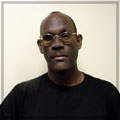
In this paper we use a single scatter lidar equation to investigate tropospheric and stratospheric aerosol and temperature measurements derived from the 355 and 532 nm channels. Temperature profiles of 355 nm channel were compared to coincident balloonsonde measurements between 5 and 40km. The results were discussed. The 355 nm channel temperature profiles were corrected for aerosol scattering using the 532 nm channel and an assumed Angstrom coefficient. The RMS between the corrected profiles and the balloonsonde data were computed.
